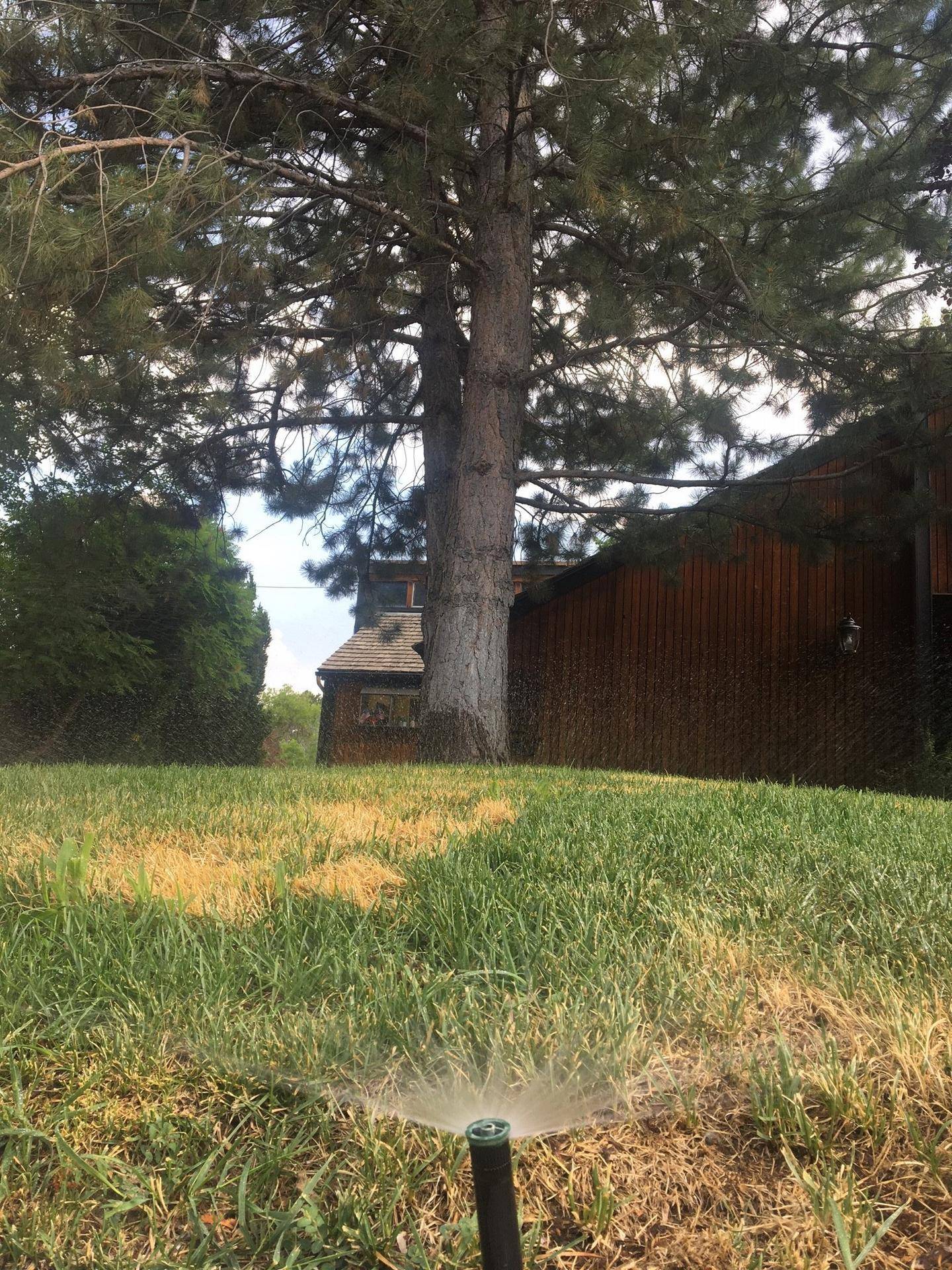By Darren McAvoy
Trees provide cooling shade that helps reduce temperatures and energy bills, and they are an essential part of our landscapes. As the drought persists and we continue to cut back on lawn watering, it is critical that we remember to take care of our trees. While a brown lawn will come back easily if water is available next year, an under-watered tree may die and it will take decades for another tree to replace it. Consider this information to keep trees thriving.
1 – Determine moisture levels. Trees and shrubs need deeper, more extensive root systems than turfgrass, and they should be watered slowly and for longer periods of time than other plants. To save water and have healthy trees, withhold water until just before water stress occurs. This will depend on conditions, but will be approximately every few weeks. Leaf wilting and scorching are symptoms of water stress, indicating you may have waited too long between watering. Stress levels are different for different tree types, so take the time to learn about your specific tree’s water needs.
2 – To get deep, wide root systems, soil should be kept moist to a depth of 18-20 inches for trees and shrubs. To determine soil moisture under your trees, use a long screwdriver or metal rod as a moisture probe. The probe will easily penetrate moist soil but will stop when it hits dry soil. As for the width of the root area to be watered, wider is better, and a tree’s roots will extend out a distance close to its height as long as water is available, so consider watering an area two-thirds of this distance.
3 – Make sure your irrigation methods and equipment match the tree’s needs. Test your sprinklers by catching water in cans scattered around the irrigated area for a set amount of time. Small sprinkler heads that send a mist out can put out more water than you would expect, but if you don’t irrigate long enough, you may not provide enough water to get past the grass roots.
4 – Water by hand with a hose. This can be an efficient way to water if it is applied slowly enough to be absorbed by the soil. Consider placing a soaker hose or sprinkler turned on low over the tree roots during the coolest part of the day for two-hour intervals every few weeks.
5 – The amount of water needed for a tree depends on the weather and the tree’s drought tolerance. About one-half to one inch of water may be required weekly for shrubs and smaller trees with up to a four-inch trunk diameter. Large trees may require hundreds of gallons of water per week. It is difficult to water trees adequately with a drip irrigation system because trees may need greater amounts of water than the low flow systems can put out. For newly planted trees and shrubs, water frequently until the root system is established. Mulch and control weeds and grasses around the trunk to reduce evaporation and competition for water.
Trees are long-lived friends that have countless benefits. In our dry climate, they depend on us to supply water to keep them alive and thriving. It is especially important that we take care of them now so they will be important parts of our communities for many years to come.

